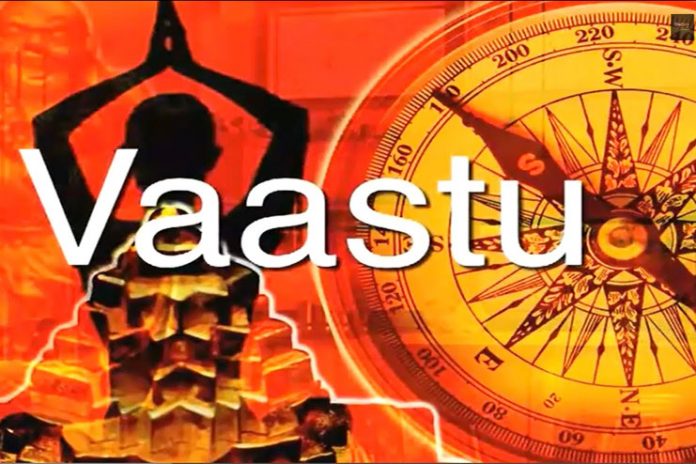The origin of Vastu Shastra goes back to thousands of years. Vastu Shastra is increasingly popular these days and known as conceptual science that helps creating the harmony in setting homes or work places. Vastu Shastra, which is also the origin of architectural science and direction, is not very new. The first reference of this particular science was made in the Vedas, and hence, we say Vastu Shastra as a science was developed thousands of years ago.
Vastu Shastra being the science of space and architecture supports the physical and spiritual health and prosperity. The art of Vastu according to the modern day historians, Ferguson, Havell and Cunningham, this architectural science was developed in the period of 6000 BC and 3000 BC.
The principles of science which has been made evident now were based purely on the effect of sunrays then (talking about thousands of years ago). These observations and corrections were noted and concluded after the complete aspectual screening and in-depth knowing of the situation. The learned men of those days might not have houses to live in those days but they most definitely had the dedication to live their lives according to the development of science now popularly termed as “Vastu Shastra” or “Vastu”.
Vastu is a part of the Vedas which is believed to be more than four to five thousand years old. Through repentance and meditations of that period, Yogis had acquired answers to the beliefs that have come from the cosmic minds. Thus, we heed Vedas as divine knowledge. The knowledge an art of Vastu Shastra originated in the Stapatya Veda which is a part of the Atharva Veda. Vastu Shastra being a Vedanga, the body of Vastu is full of knowledge of lakhs of shlokas which were handed down to the generations succeeding by hand written monographs and word of mouth like:
- ManasaraShilpa Shastra by Manasara
- Mayamatam by the Mayasuras
- VishwakarmaVaastushastra by vishwakarma
- SamaranganaSutradara by Raja Bhoja
- AparajotaPriccha which is a dialogue between Viswakarma and his son Aparajita and written by BhuvanadevacharyaSilparatna
- Agni Purana and other treatises and work by Kautilya and Sukracharya are not much popular even though they followed from the same document mentioned above.
All these differ in the basis of style as they are based from different places of origin of the Text. Myamatam and MansaraShilpa Shastra which are considered Dravidian as they are from the Southern part of India whereas, Viswakarma Vastu Shastra is considered to be Aryan as it is from North Indian origin. Mayamatam and Vastu Prakash were known to be the best because of their extensiveness and coherence. Mayamatam was then edited by hierarchy of Architects who were known as the Mayasuras while Vastu Prakash was then edited by the well-known and most esteemed Architect of ancient India- Acharya Vishwakarma.
Vastu Prakasha however was a notable Text; it is known to be an individual’s concept which has its own limitations whereas, for that of the Mayamatam, it is a hierarchial one originated from the Ramayana era to the Mahabharata era and past. Thus, Mayamatam as a theory has a span of hundreds of years and has been evolving since centuries and is considered the most relevant one today.
India is the mother of Vastu. Sunlight, energies, and all five elements of nature to be balanced and taken the maximum benefit of were something that was considered by the sages. The following lines depict the importance of Vastu Shastra:
“SHASTRENANEN SARVASYA LOKASYA PARAM SUKHAM
CHATURVERG PHALA PRAPTI SHLOKSHCH BHAVEDYUVAM
SHLIP SHASTRA PARIGYAN MRITYOAPI SUJETAAM VRAJET
PARMANAND JANAK DEVANAMI DIMIRITAM
SHILP VINA NAHI JAGTISHU LOKESHU VIDYATE
JAGAD VINA NA SHILPANCH VARTATE VASAU PRABHO”
The meaning of this phrase is: “Because of Vastu Shastra, the whole universe gets good health and happiness, all round prosperity. Human beings attain divinity with this knowledge. The followers of Vastu Shastra get not only worldly pleasure but also experience heavenly bliss”
The above shloka clearly says that Vastu Shastra is universal. It is not just confined to any particular group of people in the progress of human being, irrespective of caste, religion or creed.
Reference of Vastu Shastrahas also been found in the great Indian epic Ramayana. The formation of the holy city of Ayodhya which was the capital of the kingdom of Lord Rama, has the similar plan written in the great architectural text “Manasara”. “Ramsetu” of Ramayana was as well based on the Vastu principles.
Mahabharata, which is considered to be the biggest and the most popular epics of ancient India also, has references of Vastu Shastra. It has been denoted that Indraprastha, which is the city that was built for the Pandavas also had most of the houses constructed using this architectural science. Those houses constructed in the city of Indraprastha stood tall and looked majestic. These houses were kept off any obstructions and the compound walls were high and of uniform heights. The doors were decorated with the metal ornaments too. Even, “Maya Sabha” of Mahabharata was built as per the ancient principles of Vastu Shastra. It is considered that it was built by the great sculpture called “Mayan” as per the Vastu Shastra and was built in square shape.
 Buddhist literature makes a number of references to the buildings based on Vastu. There are a number of ‘Viharas’, temples, houses and buildings in the Buddhist texts that were based onVastu Shastra. It is also said that Lord Buddha, delivered speeches on architecture and were pretty conscious of the construction of the buildings in order. Lord Buddha, a firm believer of these principles of architecture himself, often mentioned to the architectural science in the teachings. One of the facts that say Lord Buddha gave the course tips to his disciples was to personally supervise and make sure all activities related to the construction of the buildings.
Buddhist literature makes a number of references to the buildings based on Vastu. There are a number of ‘Viharas’, temples, houses and buildings in the Buddhist texts that were based onVastu Shastra. It is also said that Lord Buddha, delivered speeches on architecture and were pretty conscious of the construction of the buildings in order. Lord Buddha, a firm believer of these principles of architecture himself, often mentioned to the architectural science in the teachings. One of the facts that say Lord Buddha gave the course tips to his disciples was to personally supervise and make sure all activities related to the construction of the buildings.
 Excavations in the ancient time, Mohenjo-Daro and Harappa were also indicated to be influenced by Vastu Shastra on the Indus Valley Civilization which shows some specific planning and construction. The basic rules and in the culture of Mohenjo-Daro and Harappan civilization are pretty much comparable and similar to the Indian origin.
Excavations in the ancient time, Mohenjo-Daro and Harappa were also indicated to be influenced by Vastu Shastra on the Indus Valley Civilization which shows some specific planning and construction. The basic rules and in the culture of Mohenjo-Daro and Harappan civilization are pretty much comparable and similar to the Indian origin.
Vastu – the word comes from ‘Vastoshpati’ which is used in ‘Rig Veda’ which is one of the four sacred vedas in Hinduism also called as ‘shlokas’ as we mentioned earlier. These are meant to provide protection, prosperity and happiness to life as well after death.
This ‘shloka’ below in Rig Veda says: ‘Rig Veda’ Script
“VASTSHPART PRATI JATI HACHASMAN TVAVESHO ATBHIVO BHAVATAH,
YAT TVAMEH PRATI NATRO JUSHSVSHAN NO BHAV DVIPAD SHA CHATUSHPADE”
The meaning of this phrase is: “Oh God of structures and building, we are your devotees. Listen our prayer, make us free of disease, give wealth and prosperity, and help the well-being of all persons and animals living in the house. These houses were free from obstructions and had big compounds with great walls.”
VASTU TIPS TO BRING GOOD LUCK TO YOUR HOME

Vastu Shastra being an amazing blends of science and art along with astronomy and astrology, it has a lot to do for your good luck at home. How would you design the building for good luck and better living? Air, water, earth, space and fire are the most important five elements of the nature which needs to be balanced for a happy living.
Of course as we told earlier, this is not a magical wand that could bring in luck and prosperity suddenly changing your life overnight, but, it is more of a discipline, when observed, affects your life gradually. Basic tips that you must follow in your home décor to bring in prosperity to life are as below.
1. Welcome To The Beautiful Home:
Vastu Shastra says that a beautiful entrance to your home attracts wealth and prosperity. The North or East direction is the ideal one to have your home’s entrance door. Keep it arranged, bright and well-lit all time. You must have the door preferably of solid wood. It is best to avoid keeping any shoe-rack or footwear at the immediate entrance as it is said to block the positive energy while entering the home. Have a nameplate at your entrance for sure.
2. The Entrance Wall Of Hope And Joy:
If you have a wall in your entrance, you must not let it be naked or ignored. The naked wall is a symbol of loneliness and especially when it is at the entrance. It gives a sad and negative impression. Put in your creativity and decorate the wall your best way possible for the positivity. Hand a picture of your God or any lovely statue as per your choice and preference.
3. Bedroom Full Of Happiness:
It is said, health is wealth. With good sleep comes good health and mind. The bedroom arrangements should be such that it follows the rules of Vastu Shastra. Keeping the bedroom well-lit and allowing enough natural light to enter during the day keeps it bright. Allowing fresh air to flow through the room by keeping proper ventilation is important.
Widow must be open for at least 20 minutes each day at the least. Have lesser furniture as they allow more space to move around. Keeping the walls of the room in a soothing color must be preferred. If the bedroom belongs to a couple, the single mattresses are suggested instead of double as it shows the togetherness. Have you bedroom planned towards the south-west direction but do not have any bed in the corner of the room pushed towards the wall.
4. Paint The Good Luck Your Way:
The Vastu painting says the scenic view of river or flowing water and goldfish on the wall brings good luck to your home along with wealth and life. The larger the painting, the more the flow of energy. Lot of fresh air and natural lights becomes one of the most important energizing practices in Vastu Shastra. Brings in wealth and prosperity to your house. Your house must get ample of bright sunlight and fresh air.
5. Bring Home The Positive Flow Of Energy:
Get an aquarium at your home to bring the positive energy. Aquarium attracts wealth and fortune. Have healthy, active and strong fishes in your aquarium that are always on the move. The constant movement of these fishes keeps the flow of energy active. Aerate the water and always keep the aquarium clean. The most ideal place for aquarium at your home is the north-eastern position of the room.
6. The Food Factory Must Be Peaceful:
There must be a harmony of water and fire in your kitchen, which are the two opposite elements of nature. The Vastu Shastra is all about balancing the energies together of the nature to bring prosperity and peace to your home and living. Thus the kitchen in each house needs to be well balanced. It is very important to place the sink and stove in a way that they do not collide with each other. The farther the possible, they must be placed. Avoid placing both the sink and the stove in the same line.
7. Fortune Water:
The clean glass of window and doors have an attraction of fresh and positive energy at home. Make a small garden outside the window in your home if you have space and have a curved path and beautify it with pebbles and install a small fountain for making it look prettier. Keeping water fountain in the north-eastern part of your home makes sure the flow of water is constant. The flowing water means the flow of energy and prosperity.


















































